First Aid Kit – first into your bag
Anyone planning a trip into the backcountry, whether it be hiking, riding an adventure motorcycle, or taking your 4X4 off-road, must consider seriously the first aid items that they are going to take with them.
A first aid kit is an insurance policy; for many trips, you will never open it, but when you need it, you need it urgently and you are likely to be stranded far from help, with an injured or sick friend. In a situation like this, with no first aid kit, you could be living the stuff of nightmares, but it doesn’t have to be this way.
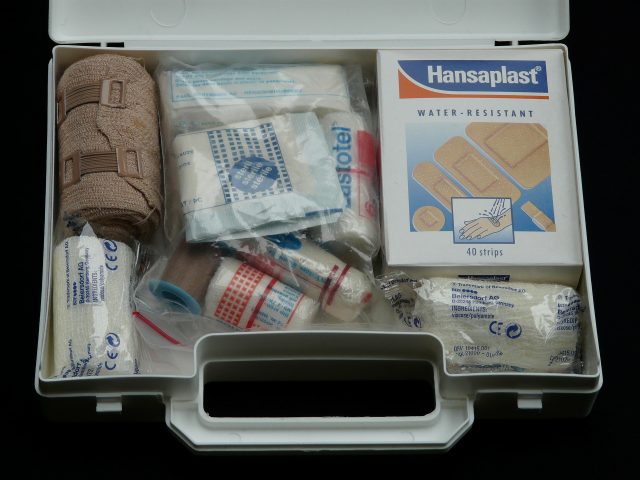
Packing a first aid kit is not rocket science, and you will probably have most of the things that you require in your medicine cabinet. The first thing to do is make a list of items that you are going to need, taking into account the packing space that you have.
Obviously, if you are hiking, you need to take the bare essentials, whereas riding an adventure motorcycle or driving a 4X4 will make your choices easier as you have more packing space, but there again an accident from a vehicle might necessitate having more medical provisions.
The Box
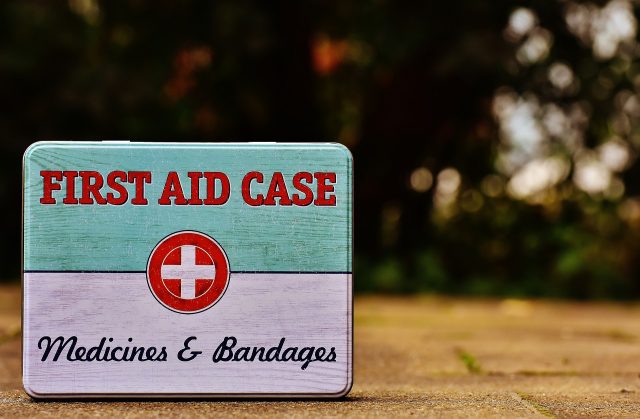
First things first, you will need something to pack your kit in. There are some very fine bespoke bags available that you can purchase that will hold everything, but it is not always necessary to splash out.
A large wash bag, for example, will work very well and if you are hiking, you could consider a strong, waterproof plastic bag instead of something hard that may be difficult to pack.
The size will also depend on how many people are in your party but do not assume that anyone else will take supplies along: make sure you can look after yourself and your party, you first though.
Now, what to put inside:
Manual or Information Cards
Medical emergencies are unpredictable and often occur when least expected so if you have never done any first aid training look for a pocket-size first aid manual and tuck it in. Having a manual that you can refer to will give you some comfort if you are faced with administering first aid.
It is a very good idea to get some first aid training, even if it’s just the very basics, it will stand you in good stead and help you keep calm under pressure.
Kit
These are basic items that you should include and will cover most of your first aid needs, we’ve broken things down a little more further on in the article.
Tools
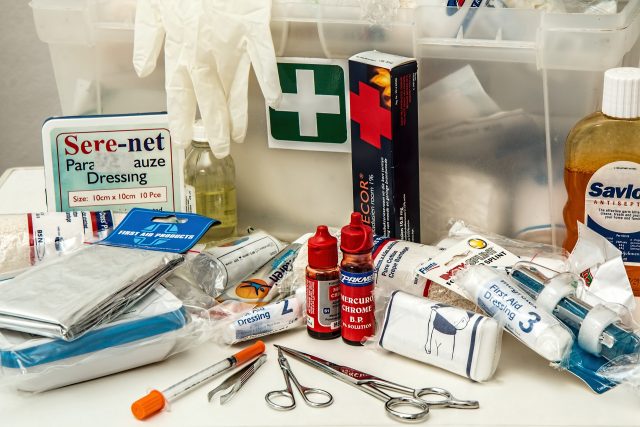
- Disposable gloves – try to avoid latex as some people are allergic to it
- Tweezers
- Scissors
- Safety Pins – various sizes
- A multi-tool
- Eye bath
- CPR micro shield mask to protect you from blood or saliva when giving CPR
- Space blanket
- Waterproof matches
Clean Hands – don’t treat someone else with dirty hands!
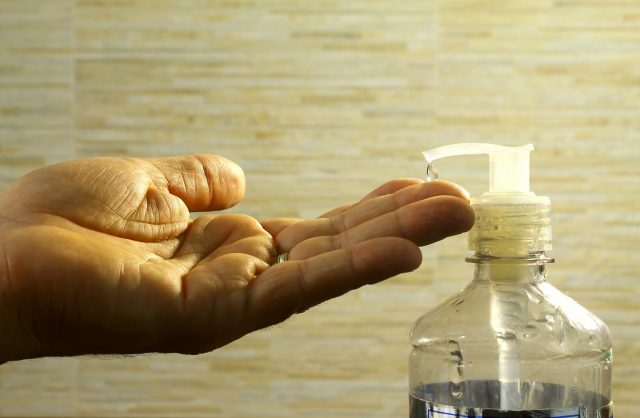
- Hand sanitizer
- Wet wipes – take a few and put them in a Ziploc bag
Cuts, grazes, and wounds
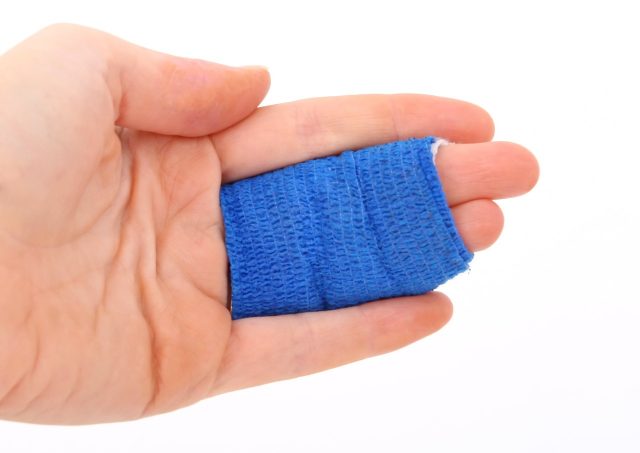
- Butterfly closures
- Adhesive plasters – take a selection of different sizes
- Sterile gauze dressing pads – these will be used to stop bleeding and provide cover under a bandage
- Sterile dressings – non-adherent type to cover blisters, cuts, and minor burns
- 1” adhesive tape – will hold any dressing in place
- Antiseptic or alcohol-based wipes
- Antiseptic liquid – usually mixed with a little water to flush wounds
- 3” elasticized bandages
- 4” elasticized bandages
- Triangular bandages
- Moleskin for blisters
Burns
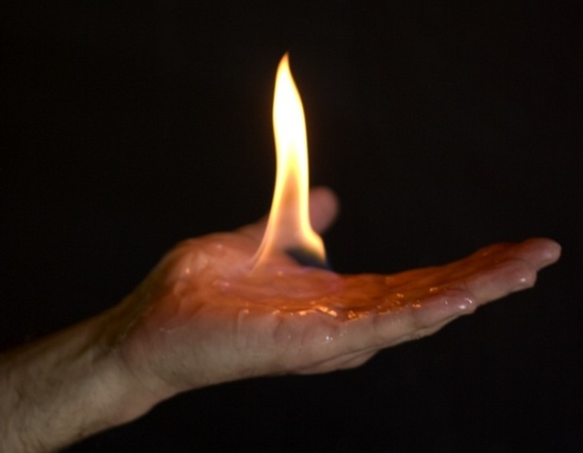
- Burn treatment gel – there are excellent burn dressings that are gauze impregnated with a cooling gel. Burns get infected very quickly, and these dressings cool and ease the pain which will help reduce shock. Anybody with a serious burn must receive professional medical care as quickly as possible.
Ointments
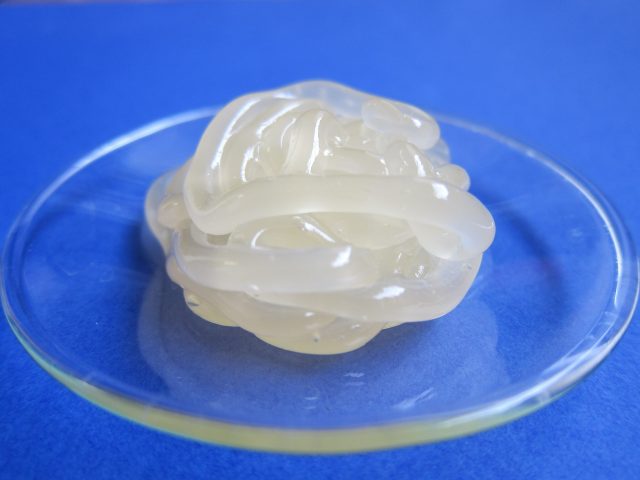
- Aloe Vera Gel
- Topical antibiotic treatment for wounds
- Hydrocortisone cream will soothe many skin irritations
- Antihistamine cream for insect stings
- Anti-fungal cream
- Eye drops
Medication
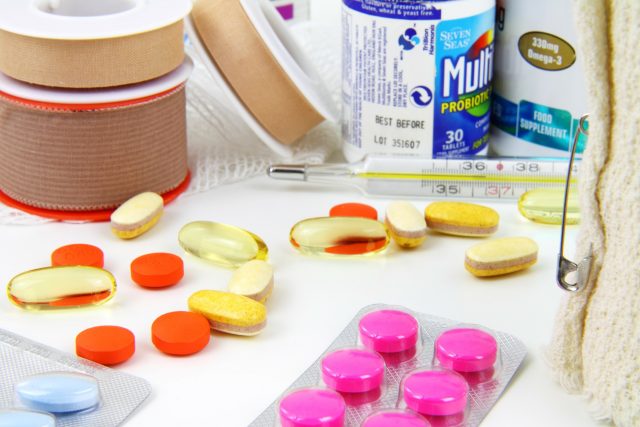
- Pain relievers – include both aspirin and ibuprofen
- Antihistamines for additional relief of allergies and insect stings
- Imodium or other diarrhea relief medication
- Antacid tablets
- A mild laxative
- Oral rehydration salts – these electrolyte salts will replace lost electrolytes as a result of dehydration or diarrhea. At a push, sugar and salt tablets can be mixed with water.
Traveling
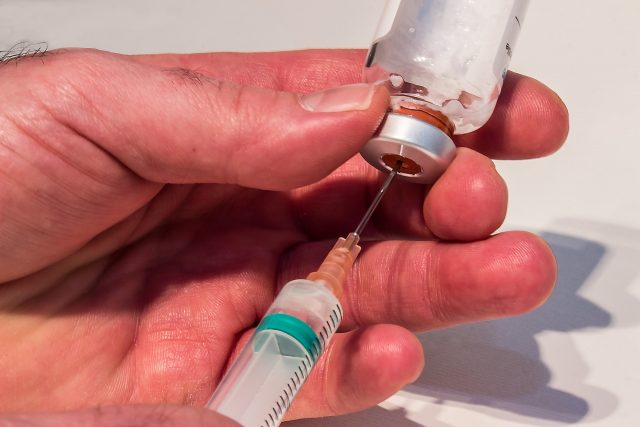
If you are going to visit a country where the medical facilities are suspect, it would be a good idea to pack some syringes of different sizes along with needles. If you are unlucky enough to need an injection of some sort, insist on using your own disposal syringes instead of relying on those supplied by the medical establishment, especially if they do not come out of a sealed packet.
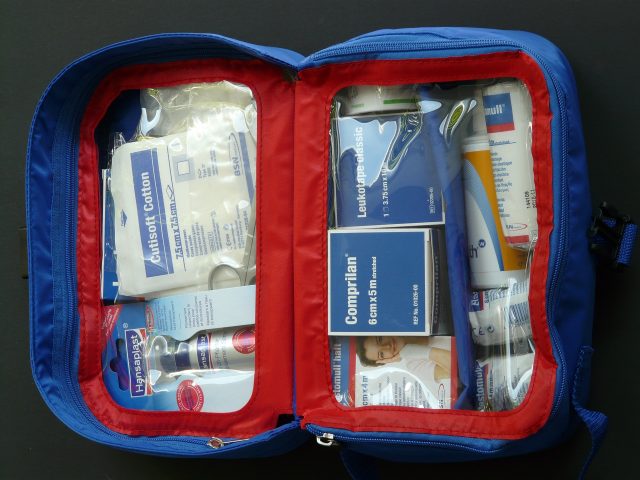
It is not necessary to take all the hard plastic containers that medication is packed in BUT there are some precautions that will have to be taken. Obviously, if there are small children in the party, the first aid kit must be packed in a safe location that they cannot get to, and they must be taught only to touch it if they are asked by an adult to bring it to them; otherwise, it is strictly off limits.
If you take any medication out of its original packaging, make sure you label the plastic bag clearly with the name of the medication and its expiry date. Ziploc bags make very good pill carriers, and it is easier to pack tablets into a smaller space if they are removed from their plastic bottles but be careful with the labeling.
Remote areas
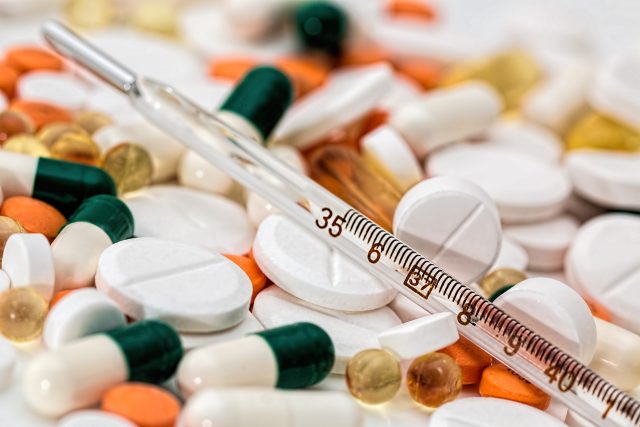
If you are going to be going to some very remote areas, you can ask your doctor to prescribe some wide-spectrum antibiotics that will be suitable for all members of the party. Make very sure that the doctor gives you clear instructions on how to use them, but they may help if you have a serious injury and it will take you some time to get to medical care.
Remember to add any chronic medication that your family is taking and again make sure everything is clearly labeled.
Getting medical help
Probably, one of the most important additions to any first aid kit would be some means of contacting medical help. If the wilderness area has mobile phone coverage, take your phone even if it is turned off for the trip and only used in an emergency.
If you do not have mobile coverage, consider hiring a satellite phone for the duration of your trip. Again, it need never be used except if you run into some kind of emergency. Remember to pack a notebook with telephone numbers for emergency services.
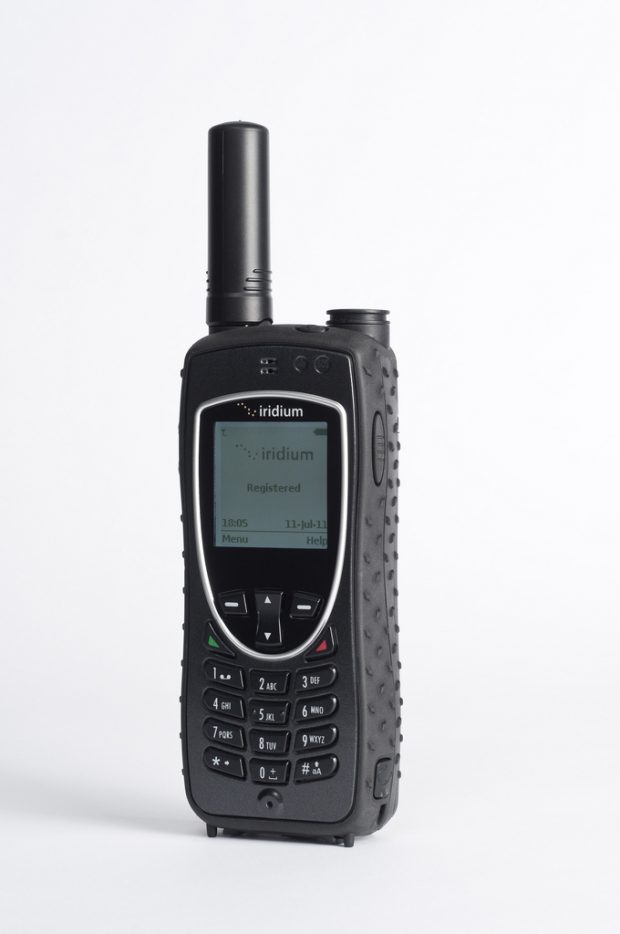
First aid is largely common sense and the ability to deal with a stressful situation in a calm and methodical manner. Do your best to keep calm and deal with the injury; protect yourself, check for breathing, manage any bleeding, get assistance.
If you have any comments then please drop us a message on our Outdoor Revival Facebook page
If you have a good story to tell or blog let us know about it on our FB page, we’re also happy for article or review submissions, we’d love to hear from you.
We live in a beautiful world, get out there and enjoy it.
Outdoor Revival – Reconnecting us all with the Outdoors





